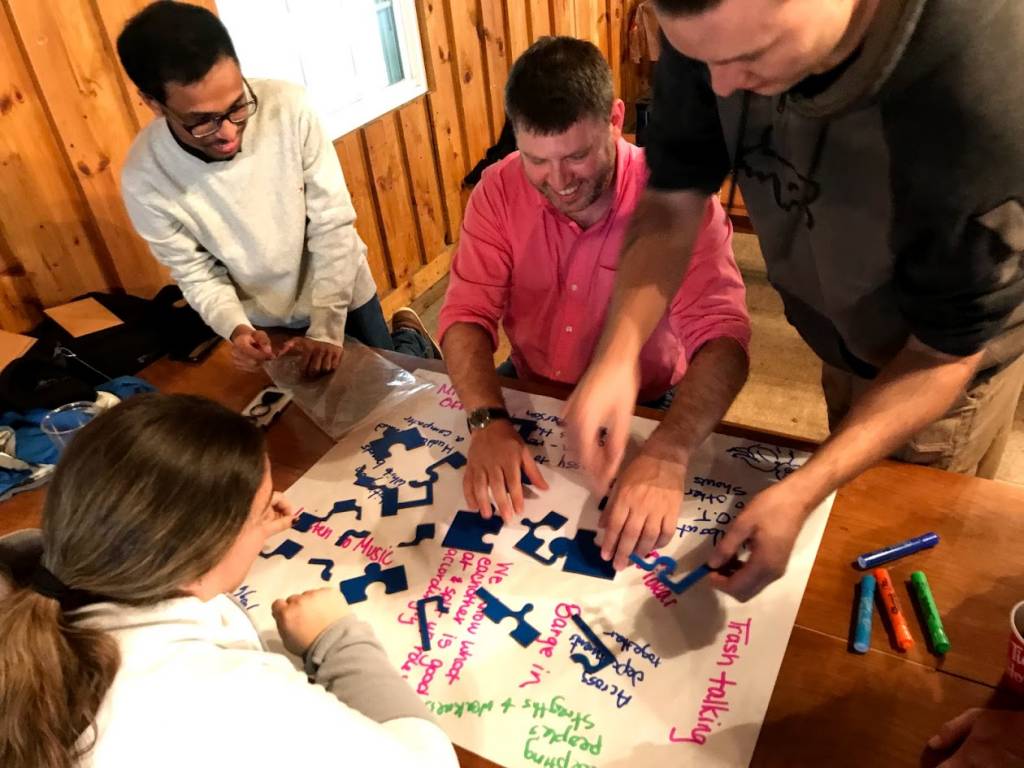
“Workplace complexity dwells in set(s) of options about what is possible rather than a set of options about what is probable.” – Simple Habits for Complex Times.
Sitting with a senior management team, we talked about how to understand and prepare the company to work through workplace complexity and Change; one of the managers said, “I think I know what the options are. I cannot understand how to decipher the opportunities that seem so ambiguous and numerous. Customers and staff are faced with multiple opportunities, and the practices that worked in the past are no longer useful.” Heads nodded, and they looked at me. I sat down, shaking my head, and said, “I don’t know, and we need to discuss this.” We then went through the BOSCOEEL team coaching process. It helped to reframe the complex leadership from creating self-efficacy through achieving goals to developing leadership and team efficacy through learning within a process.
Workplace Complexity through opportunities for change
While reading through Talent Quarterly, the article “Change is here. Now what?” Dave Ulrich shares a helpful idea for understanding Change and complexity within a VUCA (volatile, uncertain, complex, ambiguous) challenge. The article states a needed evolution of VUCA to DRET (discovery, risk, ecosystem, transparency).
Volatility to Discovery
- Change requires discovery, which comes from reinventing, seeking a share of opportunity, and managing continual change expectations.
Uncertainty to Risk
- The inability to predict the future comes with a requirement to understand and manage risk. Managing risk includes increasing predictability, reducing variability, and creating control mechanisms.
Complexity to Ecosystem
- Complexity is about confusing multiple streams of activity. Anticipating it means shifting to an ecosystem logic that focuses on partnership, differentiated teams, paradox navigation, and networks.
Ambiguity to Transparency
- Reality isn’t played out in public forums where access to information becomes ever more present. Because of this, we must sense structured and unstructured data to find trends.
Within the DRET structure, the complexity of Change is still present. I like a slight reframe to opportunities, risk, and using an ecosystem concept to determine what is working to amplify and not work to dampen.
I returned to the senior management team and shared the VUCA to DRET idea, and they showed interest. Walking through the concepts:
- We identified and searched (using interviews and customer feedback) what opportunities were present for the organization.
- From the opportunities, we estimated the risk-reward for each one. We spent most of our time discovering that the organization is OK with risk and has a strong history of taking risks. This helped us create some safe-to-fail experiments to understand our risk projections better or may not make sense.
- While testing the risks, we monitored what was happening in the marketplace and the feedback the organization received from customers through observation and daily feedback. This ecosystem feedback began to change or morph the opportunities and change the risk thinking. This morphing was exciting for the team because they could listen and determine what was working and not working in a shorter feedback time.
- Knowing that much of our data came from a structured method, we decided the unstructured data would come from a short conversation called “temperature reads.” In informal discussions, the management team directly brought up the changes and asked what the employees thought and for customer feedback. In the weekly senior management meetings, they discussed the responses and continued to mix the structure and unstructured data to understand changes.
The process above isn’t easy or precise; that is the point. However, workplace complexity is here to stay. Your reaction will cause the company, team, or person to break and not recover, develop antifragility, bend, and come back stronger and wiser.

